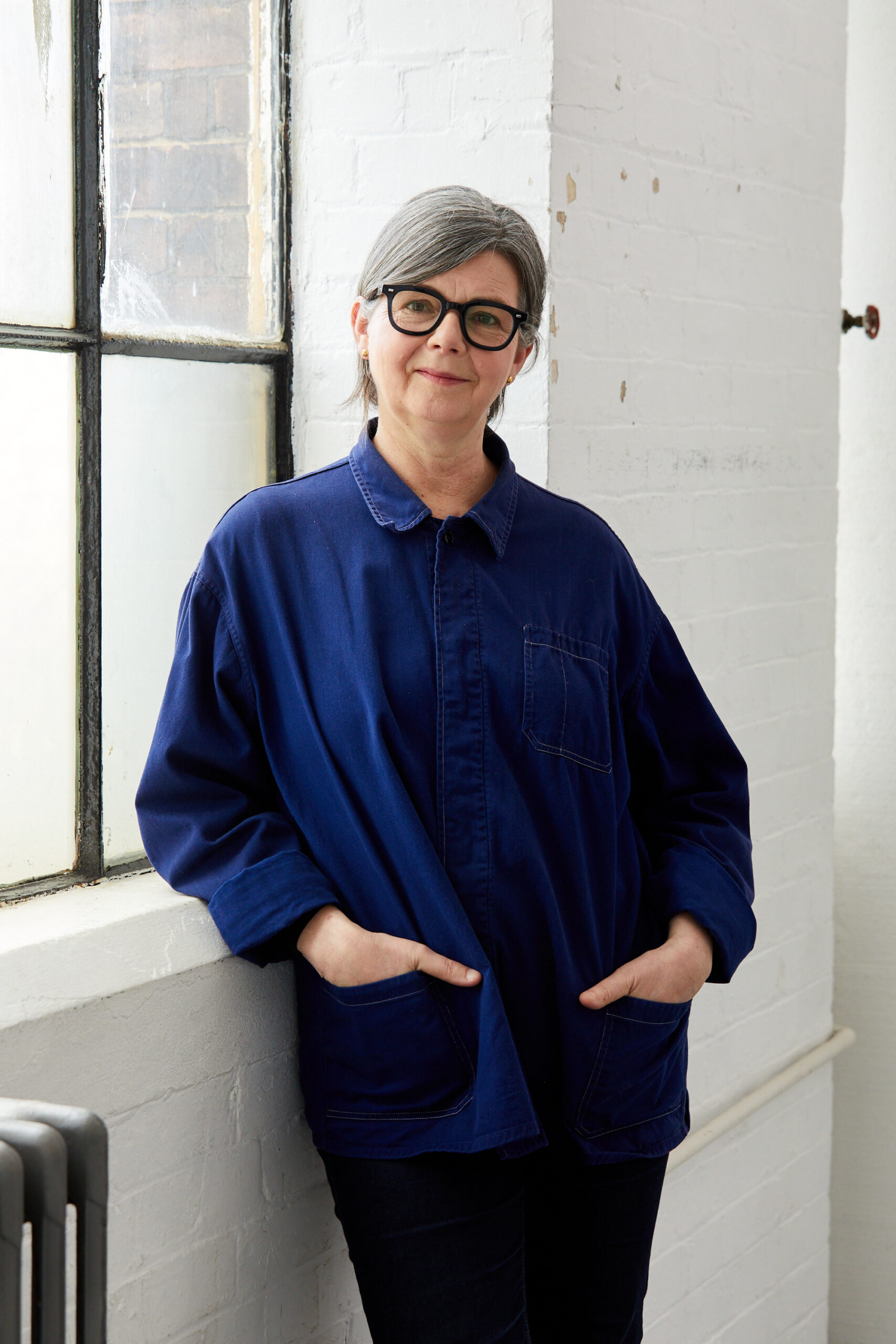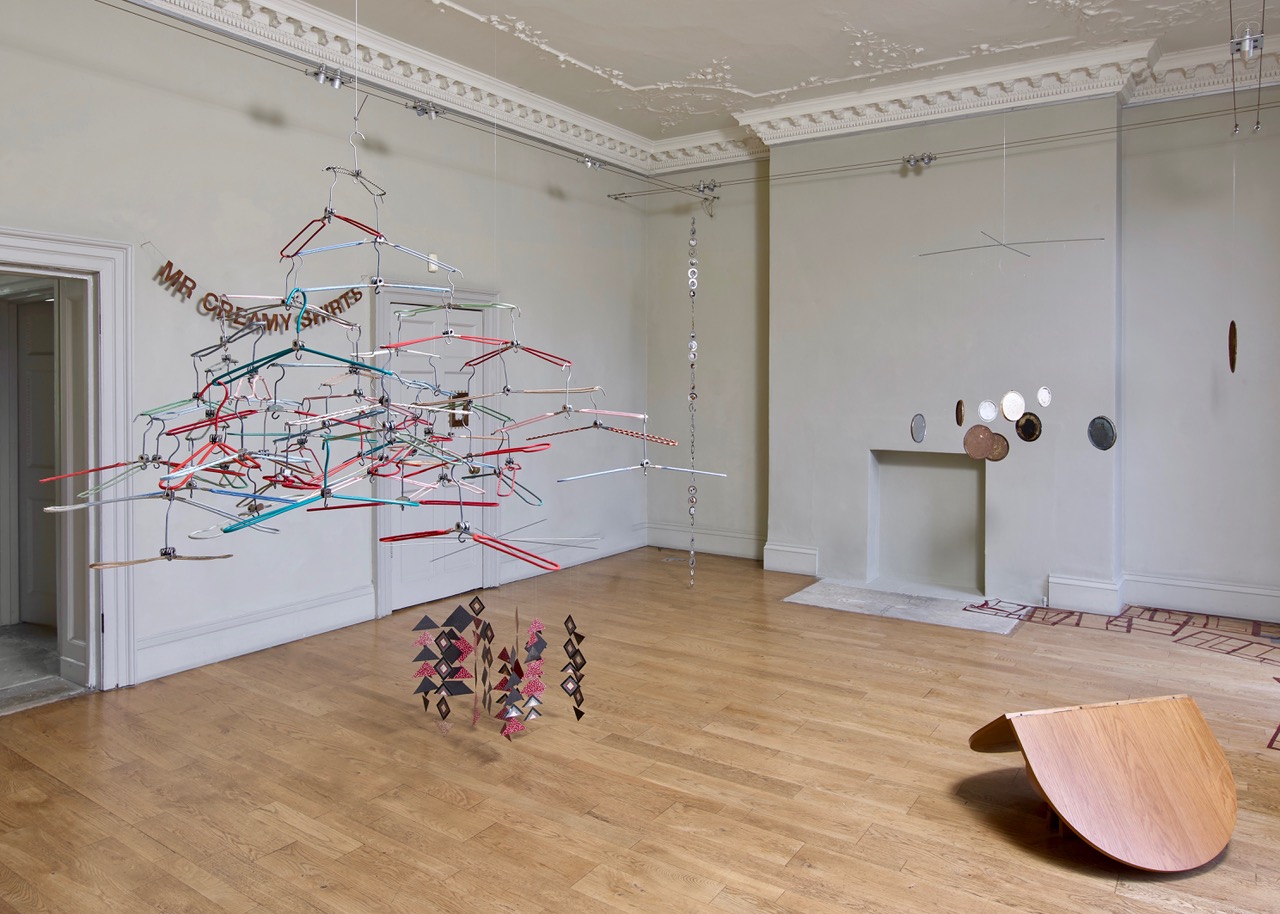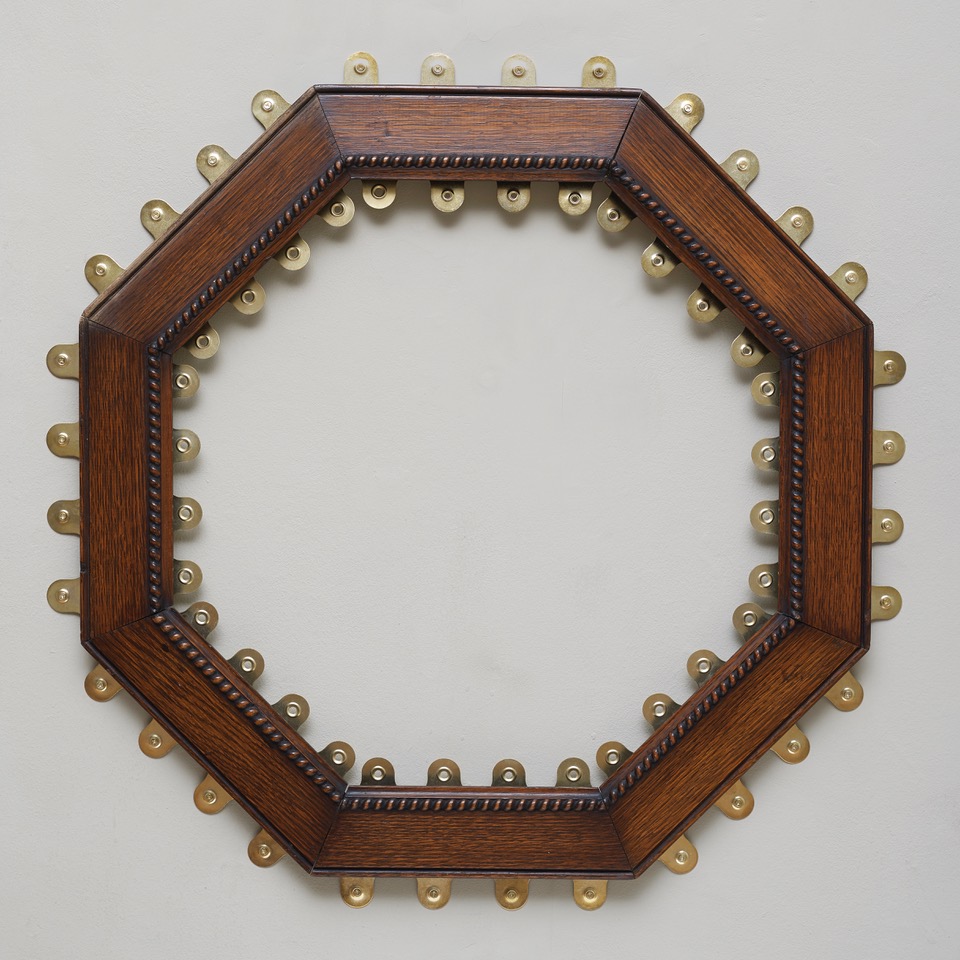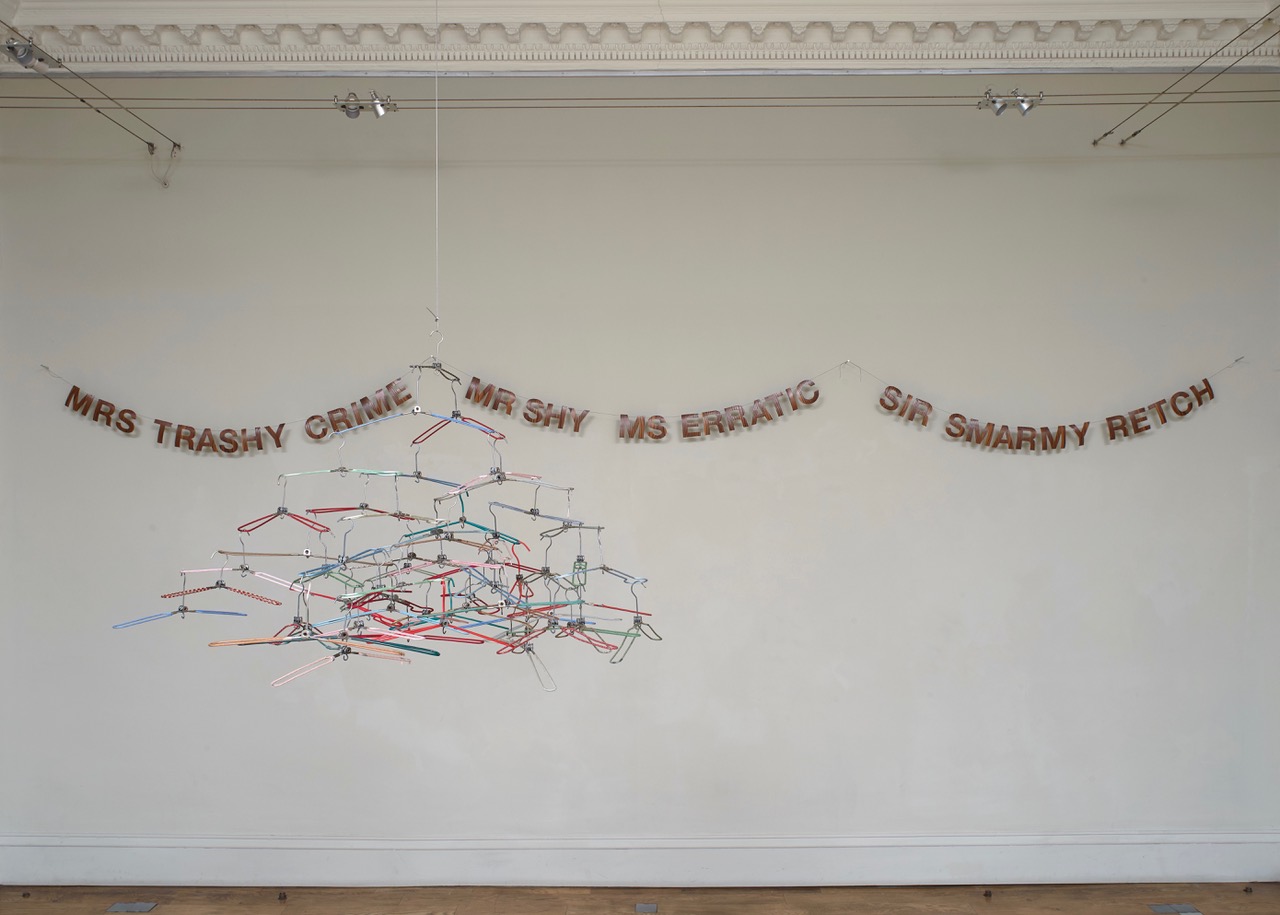Creative Women At Work: Artist Nicky Hirst

Nicky Hirst portrait by Claire Pepper
Nicky Hirst transforms found objects into works of art. The 59-year-old artist says her practise ‘sits between sculpture and installation.’ During the first lockdown we kept seeing each other on our daily walks and started to say hello. Then when everything opened up again, I visited her studio and we had a proper chat. In south London there’s a tendency for people to leave boxes with unwanted items out on the street so that passers-by can help themselves. Over the last couple of years, Nicky has taken some of these familiar items and turned them into art. I ask if this neighbourly sharing of stuff is a lockdown phenomenon, ‘ I think people have put things out on walls round here for years. I have always put it down to rented accommodation and students, combined with affluence. The joy of a mixed community,’ Nicky explains, ‘The pandemic certainly organised it a bit more, as now I get alerts on our street WhatsApp if someone is putting something substantial or interesting out.’
In 2019, Nicky was appointed the Election Artist, commissioned to create a piece of artwork around the divisive general election. Previous election artists include Cornelia Parker (don’t miss the exhibition at Tate Britain) and Jonathan Yeo. In the build up to the general election Nicky travelled around the country for six weeks, visiting numerous constituencies and attending political events, ‘I met people on both sides of the Brexit debate. They were passionate about what they believe. It was really interesting. Picking up the local papers. Hearing people talking on the local bus. I went to the much more marginal places, where people were conflicted, where they really liked their local candidate who got things done but they didn’t know who to vote for. My piece reflects that confusion, and then the outcome.’
Inspired by the people and the places she visited and their constantly changing views, Nicky created a mobile There Was A Time 2019-2020; delayed due to the pandemic it is now on display at Portcullis House in Westminster:

There Was A Time 2019 – 2020 by Nicky Hirst. Photo: Jessica Taylor
Nicky Hirst’s latest exhibition was initially designed to be a sister show to the Election Artist 19 commission, but because of delays and developments, she describes it as ‘more of a distant cousin.’ The show is in a beautiful gallery Domobaal situated in a Bloomsbury townhouse. I’ve always been a fan of going to smaller galleries in London – now, more than ever – and even better when the artist very kindly gives you a guided tour:

Nicky Hirst’s exhibition at Domobaal Gallery
TNMA: Please can you tell me a bit about your new exhibition?
NH: It’s called the ‘Electorate’ and it’s kind of connected to the sculpture at Portcullis House. In retrospect, the commission has become a sort of prototype for this exhibition, though it isn’t. It’s something very similar. Most things I’ve used are found on the street. There’s a definite system at first, but then it all starts becoming chaotic, so it’s playing with this idea of control. I like finding things, picking things up and seeing what potential they have. Items that have had their life, and now have a new use or possibility. I like when all the different characteristics come into play.

Unreliable Narrator by Nicky Hirst
TNMA: And talk me through a few key pieces…
NH: Everything was collected from 2019 and onwards. Mainly during the pandemic. I love the economy of working like this. The framed piece with all the mirror plates, Unreliable Narrator, is about being well-intentioned but not understanding. That’s how I feel sometimes. Not quite getting it. This reflects the feeling of our age at the moment. It feels like nothing seems to make sense, in a way, it feels quite disordered. I’ve got that childhood feeling of fear, of uncertainty. These are strange times…
The piece hanging on the wall (final photo) is based on a ‘Merry Christmas’ banner I found with a load of Christmas stuff. I played around and made anagrams. Language and communication is a big part of this exhibition. Things changing, new generations, there’s something about wanting to address that. There’s often a reaction from people seeing items that are familiar.
TNMA: I get the feeling that language is important to you?
NH: The text in the hall is my philosophical thinking about what we’ve been told. I’ve taken out every other letter and so it’s called ‘Half Listening.’ It’s about information and misinformation. Like anagrams. When I followed the general election trail and spoke to loads of people, everyone said something different, everyone had a different opinion. And you know when someone says ‘Oh did you read this in the Guardian?’ and they repeat what they’ve read but they’ve put their spin on it, and then you remember that snippet. What they said, rather than the actual facts…
TNMA: I like the brilliant quotes by Barbara Hepworth and Mark Twain you use on the Domobaal website. I’m wondering if it took a while to find them, or if these are old favourites that you refer to often?
NH: I have had those two quotes around for years. I jot down things that I hear or read, all the time, so have quite a bank of them. It’s a lot like taking the photographs of things I see. I guess I used them as paired ‘readymades’, rather than writing my own version.

Found photos are given a 1960s spin
NH: This piece was based on pictures found on Chadwick Road they must have been moving house and they put all of their photos outside. I reconfigured them in a 1960s-style. You get a sense of who the people were. They loved their cats. They have Penguin books on their bookshelves. They look quite cool. They loved their plants – and they quite often drank beer at home with friends. It’s nice to speculate. I love really old photos that become something interesting when you consider who the people are. They’re everybody. They could be my old photos. They were tidily placed in a box outside, in order for someone to find them. In a nice tin box with acorns on; almost as a suggestion.
TNMA: How did it feel when you installed the exhibition and gave all the objects a new home?
NH: Lots of these objects are aspiring to be in a building like this but would never make it. All this stuff was chucked out. It was exciting to be in this space because once I started putting the pieces next to each other the conversation and connection between the pieces began. I like the strange alchemy when things come together and change their context. It’s exactly what a painter tries to achieve. Turning gunky paint into a piece of art, something with authorship.
There is a lot of adaption. One piece didn’t feel quite right in the space and I removed it. I like things just being themselves. It does sometimes throw people. And I welcome that discomfort. I want viewers to look at it from their own perspective. The act of looking. An explanation isn’t always necessary.

Happy Christmas anagrams
TNMA: Would you describe your art as democratic?
NH: I think there is a a democracy within these art works, playing into the art market. Bigger works are typically more expensive and smaller works are usually cheaper. Every piece is the same price. It’s something about playing with hierarchies. Having thought about parliamentary parties and seats of power, there’s something about democracy and people power that becomes more and more interesting.
And, I hope that everyone can get something from this. I like onlookers to form their own ideas and opinions. There’s a proposition and it’s non-verbal. I can tell you everything about it but that wouldn’t be that interesting because it will cut-out your own thoughts, feelings and emotions. I really don’t think art is different from any other things in the world.
TNMA: Have you always collected things?
NH: I think I’ve always been like this. It’s like being a good editor, it’s all about the edit. I’m an editor of stuff and I can be quite ruthless.
TNMA: And finally, tell me a bit about your outfit. I LOVE a chore jacket!
NH: I wore second-hand dungarees and electrician’s jackets all through my 20s, 30s and 40s and still hang on to a bit of workwear. I find the invisibility of being an older woman interesting. You can get away with quite a lot if you go unnoticed – invisibility can be a super power. I love this jacket, mainly because the previous owner’s name is sewn into the back with yellow thread. It says HEFNER on the inside but the best bit is the incomprehensible, reverse text visible on the outside.
I usually wear very simple blue, black or grey clothes with jeans. The feel and weight of the fabric is important and I like them to create a boxy shape rather than cling. I tend to wear things until they are worn out. If I like an item of clothing I might buy it twice, wear one all the time and keep one for slightly smarter occasions. That way you don’t have different clothes for work and going out, but your going out clothes don’t have holes in!
Electorate by Nicky Hirst is on at Domobaal until 9 July 2020 (and then through to August by appointment only). Nicky is also part of an artist-led programme, visiting studios and mentoring artists, and editor of MASS magazine.
Follow Nicky on Instagram HERE.
I always like to think the stuff I leave out is picked up by the local artists. It always seems to go quickly! Is the installation in Portcullis house still up?